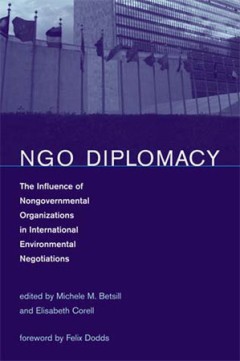Filter by

The Governance of Insurance Undertakings
This open access volume of the AIDA Europe Research Series on Insurance Law and Regulation brings together contributions from authors with different legal cultures. It aims to identify the legal issues that arise from the intersection of two disciplines: insurance law and corporate/company law. These legal issues are examined mainly from the perspective of European Union (EU) law. However, ther…
- Edition
- 1
- ISBN/ISSN
- -
- Collation
- -
- Series Title
- AIDA Europe Research Series on Insurance Law and Regulation
- Call Number
- X, 360

Locating Legal Certainty in Patent Licensing
This open access book presents global perspectives and developments within the information and communication technology (ICT) sector, and discusses the bearing they have on policy initiatives that are relevant to the larger digital technology and communications industry. Drawing on key developments in India, the USA, UK, EU, and China, it explores whether key jurisdictions need to adopt a diffe…
- Edition
- 1
- ISBN/ISSN
- 978-981-15-0181-4
- Collation
- -
- Series Title
- -
- Call Number
- XIV, 138

Opinions and papers of Stephen J. Field and others .
- Edition
- -
- ISBN/ISSN
- -
- Collation
- 2 v. 22 cm,Table of contents in each volume
- Series Title
- 2
- Call Number
- -
- Edition
- -
- ISBN/ISSN
- -
- Collation
- 2 v. 22 cm,Table of contents in each volume
- Series Title
- 2
- Call Number
- -

Migrants, Refugees and Asylum Seekers’ Integration in European Labour Markets
This open access book discusses how, and to what extent, the legal and institutional regimes and the socio-cultural environments of a range of European countries (the Czech Republic, Denmark, Finland, Greece, Italy, Switzerland and the UK), in the framework of EU laws and policies, have a beneficial or negative impact on the effective capacity of these countries to integrate migrants, refugees …
- Edition
- 1
- ISBN/ISSN
- 978-3-030-67284-3
- Collation
- -
- Series Title
- IMISCOE Research Series
- Call Number
- XI, 258

Global Democracy and Sustainable Jurisprudence: Deliberative Environmental Law
A proposal for a philosophical foundation and a realistic deliberative mechanism for creating a transnational common law for the environment.In Global Democracy and Sustainable Jurisprudence, Walter Baber and Robert Bartlett explore the necessary characteristics of a meaningful global jurisprudence, a jurisprudence that would underpin international environmental law. Arguing that theories of po…
- Edition
- -
- ISBN/ISSN
- 9780262258524
- Collation
- 1 online resource (xi, 224 pages)
- Series Title
- -
- Call Number
- -

Managing Institutional Complexity: Regime Interplay and Global Environmental …
"A Core Research Project of the International Human Dimensions Programme on Global Environmental Change (IHDP)."Here, experts investigate how states and other actors can improve inter-institutional synergy. They examine the complexity of over-lapping environmental governance structures.OCLC-licensed vendor bibliographic record.
- Edition
- -
- ISBN/ISSN
- 9780262298346
- Collation
- 1 online resource (xvi, 353 pages) :illustrations.
- Series Title
- -
- Call Number
- -

NGO diplomacy The Influence of Nongovernmental Organizations in International…
Provides an analytical framework for assessing the impact of NGOs on intergovernmental negotiations on the environment and identifying the factors that determine the degree of NGO influence, with case studies that apply the framework to negotiations on cl.
- Edition
- -
- ISBN/ISSN
- -
- Collation
- 1 online resource (xvii, 244 pages)
- Series Title
- -
- Call Number
- -

Institutional interaction in global environmental governance : synergy and co…
Annotation This systematic investigation of the interaction among international and European institutions provides both a theoretical framework for analysis and the first broad overview of this largely uncharted field of research. By offering detailed case studies and a systematic analysis of results, the book examines the effects of institutional interaction on environmental governance and exp…
- Edition
- -
- ISBN/ISSN
- 9780262280945
- Collation
- 1 online resource (xix, 405 pages) : illustrations.
- Series Title
- Global Environmental Accord: Strategies For Sustainability And Institutional Innovation
- Call Number
- -

NGO diplomacy :the influence of nongovernmental organizations in internationa…
Provides an analytical framework for assessing the impact of NGOs on intergovernmental negotiations on the environment and identifying the factors that determine the degree of NGO influence, with case studies that apply the framework to negotiations on cl.OCLC-licensed vendor bibliographic record.
- Edition
- -
- ISBN/ISSN
- 9780262268417
- Collation
- 1 online resource (xvii, 244 pages)
- Series Title
- -
- Call Number
- -

The Politics of Adoption
This book explains, compares and evaluates the social and legal functions of adoption within a range of selected jurisdictions and on an international basis. It updates and extends the second edition published by Springer in 2009. From a standpoint of the development of adoption in England & Wales and the changes currently taking place there, it considers the process as it has evolved in other …
- Edition
- 1
- ISBN/ISSN
- 978-94-017-9777-1
- Collation
- Politik
- Series Title
- Ius Gentium: Comparative Perspectives on Law and Justice
- Call Number
- 324
 Computer Science, Information & General Works
Computer Science, Information & General Works  Philosophy & Psychology
Philosophy & Psychology  Religion
Religion  Social Sciences
Social Sciences  Language
Language  Pure Science
Pure Science  Applied Sciences
Applied Sciences  Art & Recreation
Art & Recreation  Literature
Literature  History & Geography
History & Geography